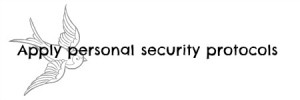AITSL explicitly identifies a number of professional teaching standards for graduate teachers. This post focuses on area 4.5, to “use ICT safely, responsibly and ethically”. At the graduate level, AITSL states that teachers should “demonstrate an understanding of the relevant issues and the strategies available to support the safe, responsible and ethical use of ICT in learning and teaching”.
![ICT terminology can be daunting for beginning teachers [image was created by the author using wordle.net]](https://asmartteacher.edublogs.org/files/2013/09/ict-wordle-10bljfh-300x214.jpg)
But what does this mean?
We can deconstruct this standard by identifying each component; we are discussing safety, responsibility, and the code of ethics for the use of ICT. These areas link directly to the elements of the ICT capability in the Australian Curriculum.
![[Image was created by the author using Aus. Cur. Organising Elements on picmonkey.com]](https://asmartteacher.edublogs.org/files/2013/09/ict-protocols-1ce371p-300x300.jpg)
For the purpose of this post I will refer to a unit on Indonesia that was taught as part of my professional experience. Students were to create an information report that responded to English outcome ACELY1682, as well as CCP: Asia and Australia’s engagement with Asia OI.1. Throughout this process the students were required to source information and images to create an engaging report.
The recognition of intellectual property relates to the ethical use of ICT.
What are the specific classroom implications of this?
As teachers, we need to be aware, and to make our students aware, of what copyright means, and more specifically, creative commons licences.
In the classroom, this might look like a resource-based learning lesson, in which students are introduced to the CC licences, and then given the opportunity to source information and media files that are licenced under CC.
For example, in creating information reports on Indonesia students would be directed to Wikimedia Commons, where they can search the repository for files relating to their topic.
We may also wish to share our own teaching resources under a Creative Commons licence, which ensures our work is attributed to us. Judy Salpeter (2008) notes that “by putting a CC license on your work, you are allowing people to share it easily with others and, at the same time, outlining the ways in which you want to be given credit…It’s a very different take on copyright, and makes so much more sense today”(p.33).
These can be described as strategies employed to protect digital information, and relates to both working responsibly and safely using ICT.
The implications for teachers?
This means guiding students to securing personal information in the digital arena. For example, students need to develop private passwords and logon information. It is also your role to guide students in saving their work in ways that are secure and manageable.
Using the Indonesia information report example, scaffolding would be required to correctly demonstrate to students how to save their documentation (typed work, graphics, research etc.) to their personal server or device.
Applying security practices also entails guiding students in the types of personal information they may choose to share digitally. In the classroom, this may involve discussion about publishing personal information, particularly when using social media, and online spaces for publishing projects from across the curriculum. This also applies to teachers. It is crucial to store and post any personal information in a way that doesn’t jeopardise the safety of both yourself, and your students.
These protocols include digital citizenship, online etiquette, personal security, and cyber safety, and links to all areas of the AITSL standard. The Australian Federal Police offer a guide for [Social_Media_Reputation_Management2013] (pdf), which can be applied to teachers personally, and used for guiding student’s choices. DECD also provides policy on the use of social media in South Australia; it is vital to research your own governing body’s policy for social media.
Darcy Moore notes that “teachers need to be both tech savvy and wise if they are to successfully… support children to be informed digital citizens who are secure online”, and further states that it is necessary “ to employ a policy of discussion and democratic decision-making”. This reflects the practice of having open discussions with students about how they choose to represent themselves online, and what it means to be a digital citizen both at home and school. There is a plethora of resources available for navigating personal use of ICT in safe, responsible ways, such as ThinkUKnow and Stay Smart Online . Fiona Lucas suggests that we manage our online reputation by following these key steps:
![[image was created by the author, derived from the work of Fiona Lucas, using picmonkey.com]](https://asmartteacher.edublogs.org/files/2013/09/Fiona-Lucas-adaptation-29upmoz-300x300.jpg)
Impacts of ICT is addressed through each and every activity involving ICT both at home and school. Tasks such as editing photographs, posting online, connecting with other learners through Skype, and researching, are all ways in which students can identify the impact ICT has on their own lives, their education, and the broader community. It is vital that you, as graduate teachers, continue to encourage the use of ICT in safe, responsible and ethical ways and demonstrate these practices in your own use of ICT.
Referring to the Indonesia report example, students are able to ethically, responsibly and safely collect, store and present information in ways they could never have achieved without the use of ICT. The students can reach the outcomes of the Australian Curriculum, while also responding to cross-curriculum priorities. You will recognise that the ICT capability can be applied as a pedagogical tool across the curriculum.
The aim of this post is to deconstruct the principles behind safe, responsible and ethical use of ICT in the education system and to encourage the use of ICT for both students and teachers.
Hanewald, R. (2008). Confronting the pedagogical challenge of cyber safety. Australian Journal of Teacher Education, 3, 33, 1-16.
Salpeter, J. (2008). The new rules of copyright. Tech & Learning, 29(3), 33-34 & 36.







